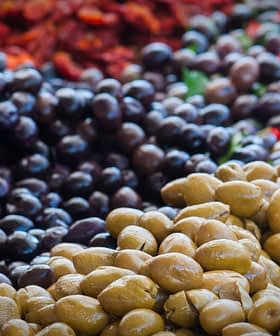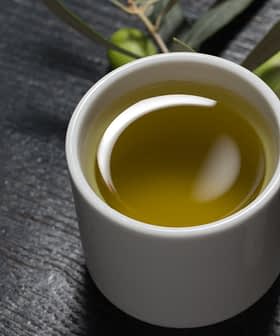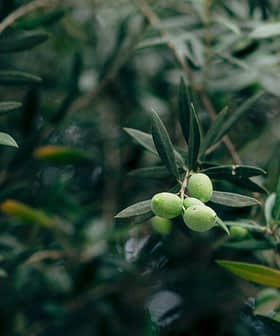Late Winter Rains, Heavy Blooms Herald a Promising Season in California
A wet and mild winter followed by strong flowering has olive oil producers feeling good about the coming harvest.
Producers in California are optimistic about the upcoming 2023/24 olive harvest following a successful bloom, despite a late start due to weather conditions. Producers are focusing on irrigation, nutrition, and care to ensure a successful harvest, with the hope for ideal summer conditions to support maximum fruit production.
After an average 2022/23 crop year, producers in California say conditions in the Golden State look promising ahead of the 2023/24 harvest.
In the previous crop year, California produced 1.94 million gallons (7.34 million liters) of olive oil, the third-highest total of the past five years and 20 percent below the rolling five-year average.
We are pleased to report a noteworthy bloom throughout the groves, signifying a promising potential for harvest.
The combination of late winter rain and good conditions during the bloom has some of the state’s largest producers feeling optimistic.
“Overall, the upcoming olive crop in California looks quite promising,” Samantha Dorsey, the president of McEvoy Ranch, told Olive Oil Times. “At McEvoy Ranch, the bloom is heavy, and the trees are in very good condition to produce another great harvest this year.”
See Also:2023 Harvest UpdatesWhile Dorsey said the bloom had been late around the state, she added that weather conditions were good for pollination and had not damaged the blossoms.
“Our trees are blooming about three weeks later than in typical years,” Dorsey said. “Fortunately, the weather has been perfect while the flowers have been open and pollinating: in the 70s (between 21 ºC and 26 ºC) with a light coastal breeze.”
“We are certainly hoping for a consistently warm summer to help the olives catch up from their late start,” she added. “The summer weather will determine if we harvest during our normal window in November or if the late bloom will push harvest into December.”
Andrew Sciabica of Sciabica Family Olive Oil, which has been producing olive oil in California since 1936, told Olive Oil Times that he also sees signs of a large harvest after a bountiful bloom.
“The bloom is a very crucial point in determining the quality of the crop,” he said. “During that time, we did not face adverse weather such as freezes, heavy rain and hot winds, so the crop has set well.”
Emma Koefoed, a marketing associate at Cobram Estate in Woodland, California, echoed these sentiments.
“Like many farmers in the valley, we observed a delay in flowering this year,” she told Olive Oil Times. “However, we are pleased to report a noteworthy bloom throughout the groves, signifying a promising potential for harvest.”
“The favorable pollination conditions also played a vital role in fostering healthy crop development,” she added. “As we continue to monitor and evaluate the groves, we remain optimistic.”
The healthy crop development for Cobram Estate, formerly known as Boundary Bend, comes despite frost damage experienced in the groves last year.
“The groves continue to exhibit remarkable resilience by directing their energy towards new growth to support this year’s crop,” Koefoed said. “It is important to note olive trees naturally maintain variable fruit production, following an alternate bearing cycle. A poor year is often trailed by a stronger one as trees regain vigor and reproductive capacity.”
While spring rains provided some relief from the long-term drought that has dominated California, the erratic weather may have affected some groves more than others across the state.
”The bountiful rains have fully charged the soil profile, so we are entering the season with all our reservoirs at capacity,” Dorsey said. “This means our surface reservoirs (ponds) that catch rain and runoff for summer irrigation are full, and our soil, which is our largest reservoir for water on the ranch, is at holding capacity, too.”
Full surface ponds came as a stark contrast to the situation in the summer of 2021 when Dorsey told Olive Oil Times the farm was short about 22 million gallons (83 million liters) of water.
“Entering the spring with full ponds and moist soil feels like an enormous relief after so many years of drought,” she said.
However, Sciabica said that cool and wet weather running into March had delayed the crop but not caused any major inconveniences.
“The bloom is a very crucial point in determining the quality of the crop,” he said. “During that time, we did not face adverse weather such as freezes, heavy rain, and hot winds, so the crop has set well.”
Koefoed echoed the sentiment. “While the wet winter and cool temperatures experienced during the early spring did delay the trees from ‘waking up,’ the extended period of rain and unexpected snowfall caused little disruption compared to last year as the trees were already in a state of dormancy.”
“As temperatures gradually warm and the soil moisture stabilizes, the trees will respond by entering an active growth phase, which includes the development of leaves, shoots and the formation of flower buds,” she added.
As this phase develops, the field team at Cobram Estate will spend the rest of the year providing the right nutrients and fertilizer to the trees to ensure maximum fruit production.
Despite the reality that farmers do not control the weather, fruit flies or equipment snafus, California producers feel several things could create ideal harvest conditions.
“An ideal summer would entail: lots of mild and warm weather, a little morning fog most days, a miraculous drop in olive fruit fly populations, and no broken irrigation pumps all year,” Dorsey said. “Plus, tons of customers buying olive oil to free up tank space for this fall’s harvest.”
Sciabica confirmed: “We should see a good harvest if the trees receive proper watering and nutrition.”
However, Koefoed warned that late flowering decreased the time for oil accumulation before the start of the harvest.
“To ensure a successful harvest, our primary focus will be to keep the olive trees in optimal condition by providing them with the necessary resources and care to carry out their vital functions,” she said. “This primarily involves delivering adequate water and nutrition to support their growth and oil production.”
Overall, irrigation, nutrition and care are three keys to a successful harvest.
“One crucial aspect of maintaining tree health and promoting oil accumulation is ensuring the trees receive sufficient water,” Koefoed said. “Adequate irrigation is vital, especially during periods of increased heat or dry spells.”
Custom irrigation schedules for each grove prevent water stress in the trees allowing them to use their energy for oil accumulation.
“Nutrition also plays a critical role in the development of a fruitful harvest,” Koefoed said. “We strive to implement a balanced fertilization program tailed to the specific nutrient requirements of the olive trees, contributing to optimal growth, flower development and ultimately, oil accumulation.”
She added that Cobram Estate frequently tests the soil and uses satellite analysis to determine where nutrients are needed in the company’s best groves.
“We monitor and mitigate any sources of stress which can impede oil accumulation,” Koefoed said. “This includes extremely high temperatures, pests, diseases or inadequate ventilation which can adversely affect the trees’ productivity.”
Share this article









